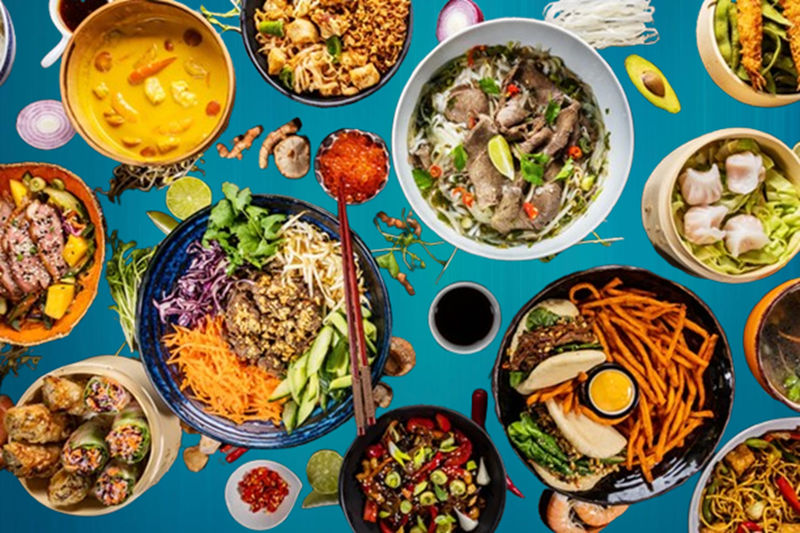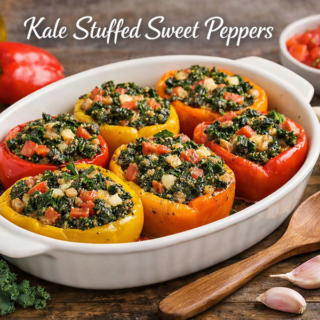Introduction
Asian cuisine represents an immense diversity of flavours, traditions, and histories, making it one of the most complex and enjoyable culinary experiences. Understanding Asian cuisine means appreciating the nuances of each region, the seasonality of their ingredients, and the cultural importance of food within their societies. Whether you are dining in a local Asian restaurant or venturing into cooking at home, the vibrant world of Asian cuisine is an invitation to explore and celebrate the rich heritage of this captivating part of the world.
Table of Contents
A Cultural Mosaic
Asian cuisine is not monolithic; rather, it is an amalgamation of different cultures and practices influenced by historical trade routes, colonialism, and global migration. Major regions include East Asia (China, Japan, Korea, Mongolia), Southeast Asia (Thailand, Vietnam, Malaysia, Indonesia), South Asia (India, Pakistan, Bangladesh, Sri Lanka), and Central Asia (Kazakhstan, Uzbekistan, Kyrgyzstan). Each region has its unique flavour profiles and cooking methods shaped by local ingredients, climate, and cultural practices.
The Diversity of Asian Cuisine
Asia is home to dozens of countries, each with its own culinary identity. Chinese, Japanese, Thai, Korean, Indian, Vietnamese, Malaysian, Filipino, and Indonesian cuisines are just a few of the major influences. Within each country, regional flavours and cooking methods add another layer of variety, making Asian cuisine endlessly fascinating.
-
East Asia
China: Chinese cuisine is perhaps the most internationally recognised Asian food. With its diverse regional variations, such as Cantonese, Sichuan, and Hunan, each offering distinct flavours and cooking techniques, from stir-frying and steaming to braising and frying, it emphasises balance and harmony in flavours. Signature dishes include Peking duck, Kung Pao chicken, and dumplings.
Japan: Known for its meticulous presentation and seasonality, Japanese cuisine focuses on freshness and quality. Sushi and sashimi are iconic, showcasing raw fish and vinegared rice with minimal seasoning. Other traditional foods include ramen, tempura, and kaiseki, a multi-course meal highlighting seasonal ingredients.
Korea: Korean cuisine is characterised by its bold flavours and use of fermentation. Kimchi, a staple side dish made from fermented vegetables, is essential in Korean meals. Barbecue (known as galbi) and stews like kimchi jjigae are popular, reflecting the communal and interactive dining culture.
-
Southeast Asia
Thailand: Known for its balance of sweet, sour, salty, and spicy, Thai cuisine features ingredients like lemongrass, coconut milk, and fish sauce. Dishes such as pad thai, green curry, and tom yum soup highlight the region’s vibrant flavours and aromatic herbs.
Vietnam: Vietnamese food is built around fresh herbs, vegetables, and rice. Pho, a fragrant noodle soup, is a staple, alongside dishes like banh mi (a sandwich) and fresh spring rolls. The emphasis is on fresh ingredients, flavour balance, and presentation.
Indonesia: Rich in spices and robust flavours, Indonesian cuisine includes dishes like nasi goreng (fried rice), satay (skewered meat), and rendang (a slow-cooked beef curry). The food often reflects the diverse ethnic groups within the archipelago.
-
South Asia
India: One of the most varied cuisines globally, Indian food is famous for its use of spices like cumin, coriander, and turmeric. Each region has its specialities; North India is known for its rich curries and bread (naan), while South India is famous for its rice-based dishes and dosas (fermented pancakes). Street food, like samosas and chaat, also plays a significant role in Indian culinary culture.
Pakistan: Similar to Indian cuisine but with its own unique identity, Pakistani food emphasises grilled meats (kebabs) and hearty rice dishes (biryani). Spices are central, and meals often include a variety of side dishes known as “salads.”
-
Central Asia
Kazakhstan: Central Asian cuisine often features meat and dairy products due to the region’s nomadic traditions. Dishes like beshbarmak (boiled meat with pasta) and plov (rice pilaf) are staples, often accompanied by fermented drinks like kumis.
Signature Ingredients and Flavours
Asian kitchens are stocked with distinctive ingredients that define each cuisine:
- Soy Sauce & Fish Sauce: Salty, umami-rich condiments used across East and Southeast Asia.
- Rice & Noodles: Staple carbohydrates, prepared in endless ways.
- Spices: From India’s garam masala to Thailand’s curry pastes, spices are used to create depth and aroma.
- Fresh Herbs: Basil, cilantro, mint, and lemongrass add brightness to many dishes.
- Fermented Foods: Miso, kimchi, fish sauce, and pickles contribute complex flavours and health benefits.
Key Ingredients in Asian Cuisine
Certain ingredients are staples across many Asian cuisines:
- Rice: A staple food in many countries, prepared in various forms, from plain steamed rice to fried rice and rice noodles.
- Noodles: Varieties include rice, egg, and buckwheat noodles, serving as foundational elements in dishes like ramen and pho.
- Soy: Integral for flavouring, soy sauce, tofu, and even fermented products like miso are common.
- Spices and Herbs: Ingredients like ginger, garlic, chillies, cilantro, and lemongrass are natural flavour enhancers, frequently used both fresh and dried.
Authentic Recipes to Try
-
Japanese Sushi Rolls
- Ingredients: Sushi rice, nori, fresh fish or vegetables, soy sauce, wasabi.
- Technique: Mastering rice seasoning and rolling.

Japanese Sushi Rolls
-
Thai Green Curry
- Ingredients: Green curry paste, coconut milk, chicken or tofu, Thai eggplants, basil.
- Technique: Balancing heat and creaminess.

Green Curry Chicken
-
Chinese Dim Sum
- Ingredients: Dumpling wrappers, pork/shrimp/veggie filling, soy sauce, and ginger.
- Technique: Folding dumplings and steaming.

Chinese Dim Sum
-
Indian Dal Tadka
- Ingredients: Lentils, tomatoes, onion, cumin, turmeric, and garlic.
- Technique: Tempering spices for maximum flavour.
-
Vietnamese Pho
- Ingredients: Beef or chicken, rice noodles, star anise, cinnamon, fresh herbs.
- Technique: Slow-simmering broth for depth.

Vietnamese Pho
The Cultural Significance of Food
In Asia, food is more than sustenance. It’s a way to connect, celebrate, and honour tradition. Meals are often communal, featuring shared dishes and a sense of togetherness. Festivals, religious rituals, and family gatherings are marked by special foods, from mooncakes during the Chinese Mid-Autumn Festival to biryani at Indian weddings.
Bringing Asian Rice Recipes Into the Nigerian Culinary Space
Rice is a beloved staple in both Asian and Nigerian cuisines, yet each culture brings its flair to the humble grain. In Nigeria, dishes like Jollof rice and fried rice are mainstays at celebrations, while Asian cultures boast a range of rice-based recipes, from aromatic biryanis to savoury fried rice and delicate sushi rolls. As globalization connects kitchens across continents, Nigerian home cooks and chefs are increasingly experimenting with Asian rice recipes, infusing new flavours and techniques into the local culinary landscape.
The Appeal of Asian Rice Recipes
Asian rice dishes draw from a wide array of flavours, ingredients, and cooking methods. Chinese egg fried rice, Thai pineapple fried rice, and Japanese sushi all showcase rice in unique ways. These recipes often use ingredients like soy sauce, sesame oil, ginger, and fresh vegetables, which add layers of flavour and vibrant colour. For Nigerians, these elements offer exciting alternatives to traditional rice preparations, providing opportunities to broaden palates and culinary repertoires.
Fusion in Practice: Nigerian Ingredients, Asian Techniques
One of the most promising aspects of introducing Asian rice recipes to Nigeria is the potential for fusion. Nigerian cooks can adapt Asian techniques, like stir-frying or steaming, while incorporating familiar ingredients such as crayfish, smoked fish, suya spice, or ugu leaves. For instance, a Nigerian-style egg fried rice might feature diced plantains, peppered beef, or locally grown vegetables, blending the best of both worlds.
Challenges and Opportunities
Adopting Asian rice recipes in Nigeria is not without its challenges. Some ingredients, like nori (seaweed) or mirin, may be harder to find or more expensive. However, local alternatives, such as scent leaf for herbal notes or groundnut oil in place of sesame oil, can be used to achieve similar effects. This spirit of adaptation is at the heart of culinary innovation.
Cultural Exchange and Culinary Growth
The integration of Asian rice recipes into Nigerian kitchens is more than a trend; it’s a celebration of cultural exchange. Food enthusiasts, restaurants, and food bloggers are leading the way by sharing recipes, hosting fusion pop-ups, and offering Asian-inspired dishes with a Nigerian twist. This movement not only diversifies the Nigerian food scene but also encourages creativity and appreciation for global flavours.
Asian Rice Recipes Already Popular in Nigeria
- Fried Rice (Chinese-style): While Nigerian fried rice has its own unique flavour, the inspiration for stir-frying rice with vegetables, eggs, and sometimes meat originates from Chinese culinary traditions. Many restaurants and home cooks now prepare versions closely resembling Asian fried rice.
- Jollof Rice with Asian Twist: Some chefs incorporate Asian ingredients like soy sauce, ginger, or sesame oil into the classic Nigerian jollof rice, creating a fusion dish.
- Coconut Rice: Inspired by Southeast Asian coconut rice, Nigerian coconut rice is now a common dish, featuring rice cooked with coconut milk and sometimes Asian spices.
- Rice and Stir-fried Vegetables: The trend of serving plain or fried rice with stir-fried vegetables in soy-based sauces has grown, especially in urban areas and Asian-themed restaurants.
- Sushi (limited adoption): In major Nigerian cities, sushi has found a niche market, especially among expatriates and adventurous locals.
- Egg Fried Rice: A popular Asian recipe now commonly found in Nigerian restaurants and fast-food outlets.
- Rice Noodles Dishes (e.g., Pad Thai, stir-fried noodles): While not as widespread, rice noodle dishes are appearing more frequently on menus, especially in cosmopolitan cities like Lagos and Abuja.
These recipes demonstrate the ongoing culinary exchange between Asia and Nigeria, enriching the Nigerian food landscape with new flavours and cooking styles.
Conclusion
Bringing Asian rice recipes into the Nigerian culinary space is a testament to the dynamism of food culture. By blending Asian techniques and flavours with Nigerian ingredients and tastes, cooks are crafting unique dishes that honour both traditions. As this fusion trend grows, it promises to enrich Nigerian cuisine and inspire a new generation of adventurous eaters and cooks.
- 25+ Delicious Kale Common Recipes That Will Transform Your Meals Forever 🌿✨
- How To Make Kale Stuffed Sweet Peppers: A Joyful, Powerful Healthy Delight🌿🫑
- How To Make Kale And Apple Slaw: A Joyful, Powerful Crunch You’ll Love 🥬🍎✨
- How To Make Delightful Ultimate Lemon Garlic Kale Pasta 🍋🧄🍝
- How To Make Kale And Bean Wraps – A Delicious Power-Packed Healthy Favorite 🌯💚

Did you enjoy this article? Please do leave a comment and rating on the blog. Tag us with your picture on Instagram @real9jakitchen










